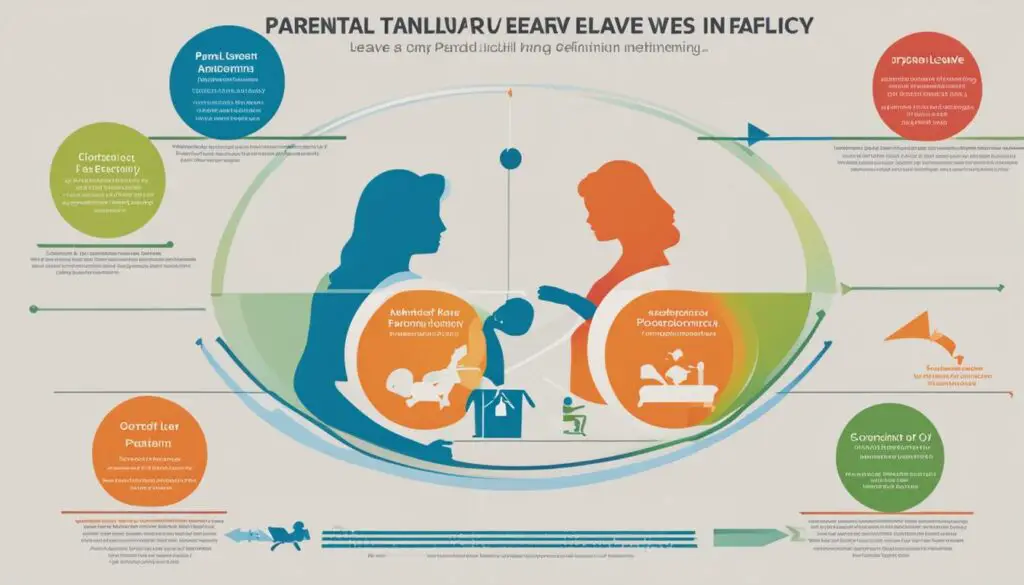Navigating Parental Leave Policies: A Guide for Expecting Parents
As an expecting parent, one of the most important considerations you will face is navigating parental leave policies. Balancing the joy of welcoming a new child with the need for time off work can be challenging, but understanding the details of parental leave policies can help you make informed decisions and ensure a smooth transition into parenthood.
Parental leave policies vary depending on your employer and the state in which you reside. While there is no federal law requiring employers to provide paid parental leave, there are certain protections in place. The Family and Medical Leave Act (FMLA) allows eligible employees to take up to 12 weeks of unpaid leave for the birth or adoption of a child. However, not all employees are eligible for FMLA leave, and unpaid time off can pose financial challenges for many families.
Some states have implemented their own paid parental leave programs, providing additional support for new parents. Understanding the specific policies for your state and employer is essential to ensure you know your rights and options. By familiarizing yourself with these policies, you can better plan and prepare for your time off and the financial implications it may have.
When considering parental leave, it’s important to evaluate the duration of leave available and whether it is paid or unpaid. Additionally, understanding the requirements for eligibility and any documentation that may be required can help you properly plan and prepare. It’s also crucial to consider the potential impact on your career advancement and job security, as well as any benefits or resources provided by your employer during this time.
Navigating parental leave policies may seem complex, but with the right information and preparation, you can confidently embrace this special time in your life. The following guide will provide you with the key aspects of parental leave policies in the United States, arming you with the knowledge you need to make the best decisions for yourself, your family, and your career.
Key Takeaways:
- Understanding the details of parental leave policies is crucial for expecting parents.
- Parental leave policies vary by employer and state, so it’s important to know your rights and options.
- Some states have implemented their own paid parental leave programs.
- Consider the duration of leave, whether it is paid or unpaid, and any eligibility requirements.
- Take into account the potential impact on your career advancement and job security.
Overview of Parental Leave Policies in the United States
Parental leave policies in the United States can vary significantly depending on a variety of factors. While there is no federal law requiring employers to provide paid parental leave, there are certain protections in place for expecting parents. The Family and Medical Leave Act (FMLA) allows eligible employees to take up to 12 weeks of unpaid leave for the birth or adoption of a child. However, not all employees are eligible for FMLA leave, and unpaid time off can pose financial challenges for many families. Some states have implemented their own paid parental leave programs, providing additional support for new parents. It’s important for expecting parents to familiarize themselves with the parental leave policies specific to their state and employer to ensure they understand their rights and options.
Parental leave policies in the United States are not uniform, creating a complex landscape for expecting parents. While the FMLA offers unpaid leave, this may not be feasible for everyone due to financial constraints. To address this, some states have taken the initiative to implement their own paid parental leave programs. For example, California provides up to 8 weeks of partial paid leave through their Paid Family Leave program. New York offers up to 10 weeks of paid leave through their Paid Family Leave program.
However, eligibility for these state programs may vary. In California, employees must have earned a certain amount of wages and have paid into the State Disability Insurance (SDI) program to be eligible for paid leave. In New York, employees must have worked a certain number of days and have wages above a certain threshold to be eligible for paid leave. It’s imperative for expecting parents to research and understand the specific requirements and benefits available in their state.
“Parental leave policies in the United States can vary significantly depending on a variety of factors.”
Parental Leave Policies by State
Each state has the ability to establish its own parental leave policies, providing additional support for new parents. The table below highlights some of the states and their respective parental leave policies:
| State | Length of Paid Leave | Percentage of Wage Replacement |
|---|---|---|
| California | 8 weeks | 55% |
| New York | 10 weeks | 67% |
| New Jersey | 6 weeks | 85% |
| Rhode Island | 4 weeks | 60% |
Please note that the information in the table is subject to change, and it’s essential for expecting parents to visit their state’s official website or consult with their employer’s HR department for the most up-to-date details on parental leave policies.
Understanding the parental leave policies in the United States can empower expecting parents to make informed decisions about their time off and financial stability. By being aware of the protections provided by the FMLA and exploring the state-level programs available, parents can navigate this important time in their lives with confidence and peace of mind.

Key Considerations for Expecting Parents
When navigating parental leave policies, there are several key considerations for expecting parents to keep in mind. First, it’s important to understand the duration of leave available and whether it is paid or unpaid. The length of leave can vary between employers and states, so knowing how much time you have off and whether it will be a financial burden is crucial.
Additionally, understanding the requirements for eligibility and any documentation that may be required can help parents properly plan and prepare for their time off. It’s also important to consider the potential impact on career advancement and job security when taking parental leave, as well as any benefits or resources provided by the employer during this time.
By considering these factors, expecting parents can make informed decisions that best suit their needs and circumstances.
| Consideration | Description |
|---|---|
| Duration of Leave | Understand the length of time available for parental leave and whether it is paid or unpaid. |
| Eligibility Requirements | Familiarize yourself with the criteria for being eligible for parental leave and any necessary documentation. |
| Career and Job Security | Consider the potential impact on your career advancement and job security when taking parental leave. |
| Employer Benefits and Resources | Explore any benefits or resources offered by your employer during your parental leave. |
By carefully considering these factors, expecting parents can navigate parental leave policies with confidence and ensure a smooth transition into this new chapter of their lives.

Conclusion
Navigating parental leave policies is a crucial step for expecting parents to ensure they have the time and support necessary to bond with their new child. By understanding the parental leave policies in the United States, considering key factors, and actively exploring their options, expecting parents can make informed decisions that prioritize their family’s well-being while maintaining financial stability.
Having the right knowledge and preparation empowers parents to confidently navigate the parental leave process and fully embrace this special time in their lives. Understanding the duration of leave, whether it is paid or unpaid, and the requirements for eligibility and documentation helps parents plan and prepare effectively for their time off.
It’s also important to consider the potential impact on career advancement and job security, as well as any benefits or resources provided by the employer during parental leave. By considering these factors and making informed decisions, expecting parents can create a balance that ensures their family’s well-being and allows them to fully cherish and nurture their new addition.
FAQ
Are employers in the United States required to provide paid parental leave?
No, there is no federal law requiring employers to provide paid parental leave.
What is the Family and Medical Leave Act (FMLA) and how does it affect parental leave?
The FMLA allows eligible employees to take up to 12 weeks of unpaid leave for the birth or adoption of a child.
Are all employees eligible for FMLA leave?
No, eligibility for FMLA leave depends on certain criteria, such as the size of the employer and the employee’s length of service.
Are there any states in the United States that have implemented their own paid parental leave programs?
Yes, some states have implemented their own paid parental leave programs to provide additional support for new parents.
How can I find out what parental leave policies apply to me?
It’s important to familiarize yourself with the parental leave policies specific to your state and employer to understand your rights and options.
Is parental leave usually paid or unpaid?
The type of parental leave, whether it is paid or unpaid, can vary between employers and states.
What documentation may be required when taking parental leave?
The requirements for documentation may vary between employers, but it’s common for proof of pregnancy or adoption to be requested.
How does taking parental leave impact career advancement and job security?
Taking parental leave may have implications for career advancement and job security, so it’s important to consider these factors when planning your leave.
Are there any benefits or resources provided by employers during parental leave?
Some employers may offer benefits or resources during parental leave, such as access to counseling services or flexible return-to-work options.
How can I make informed decisions about parental leave?
By considering factors such as the duration of leave, eligibility requirements, potential impact on career advancement, and employer-provided benefits, you can make informed decisions that best suit your needs.






